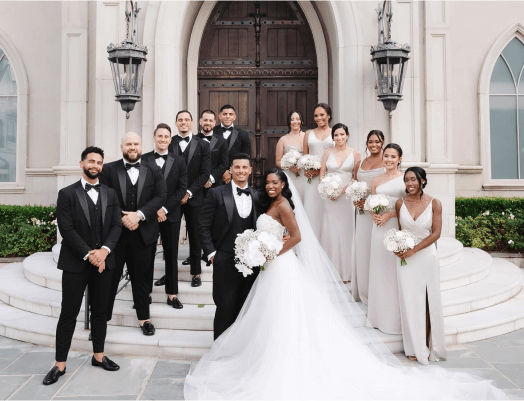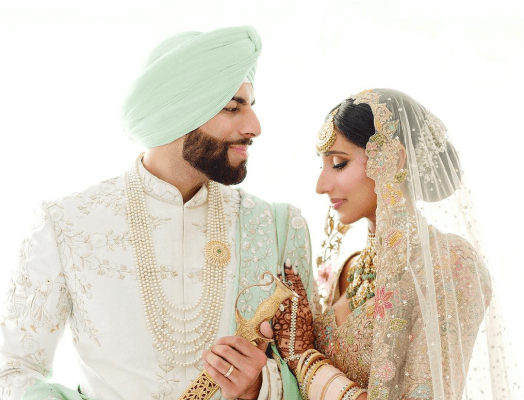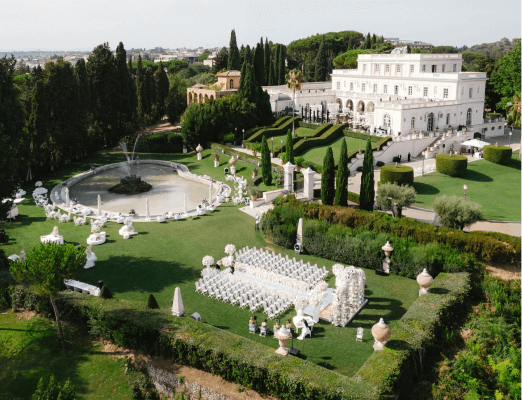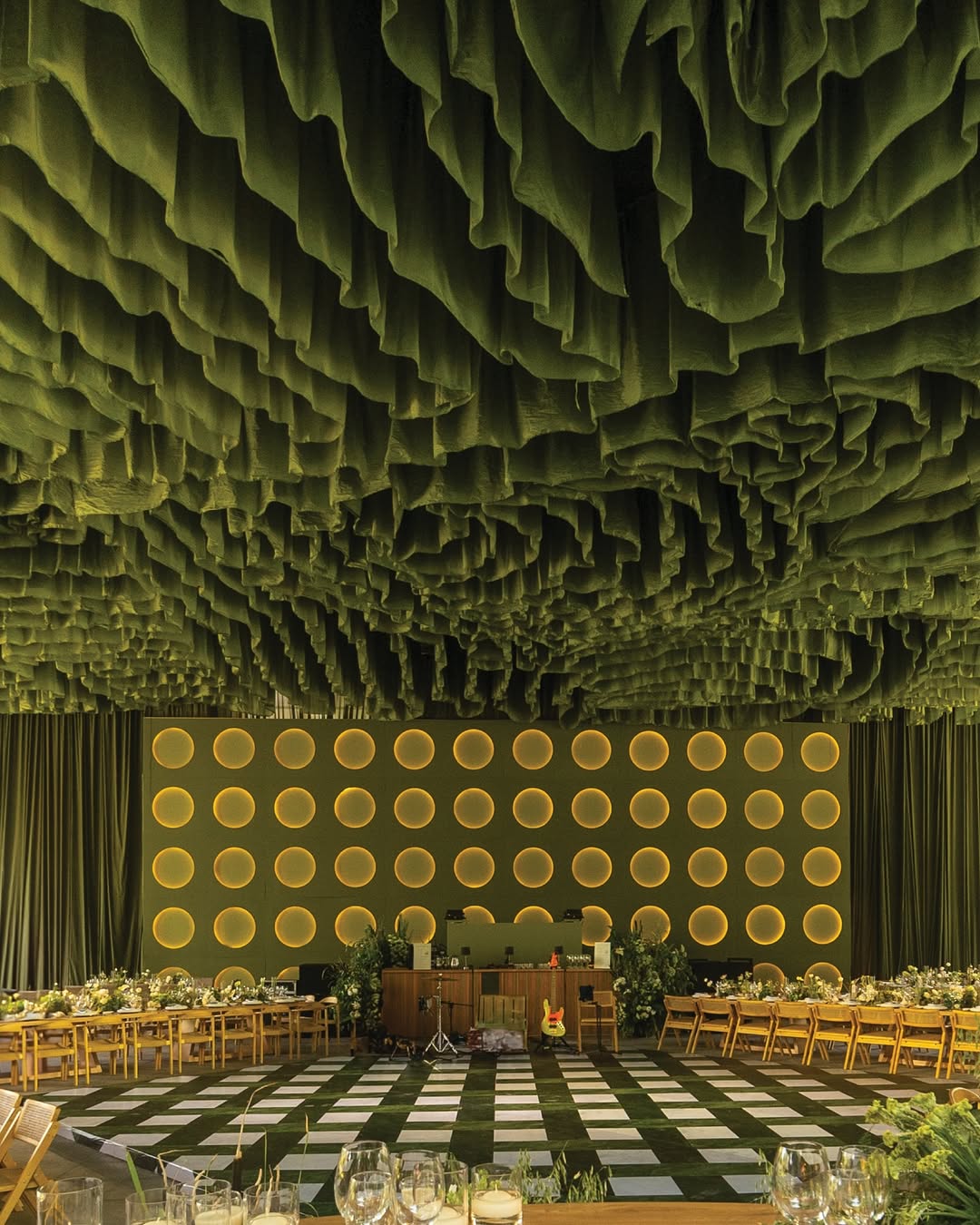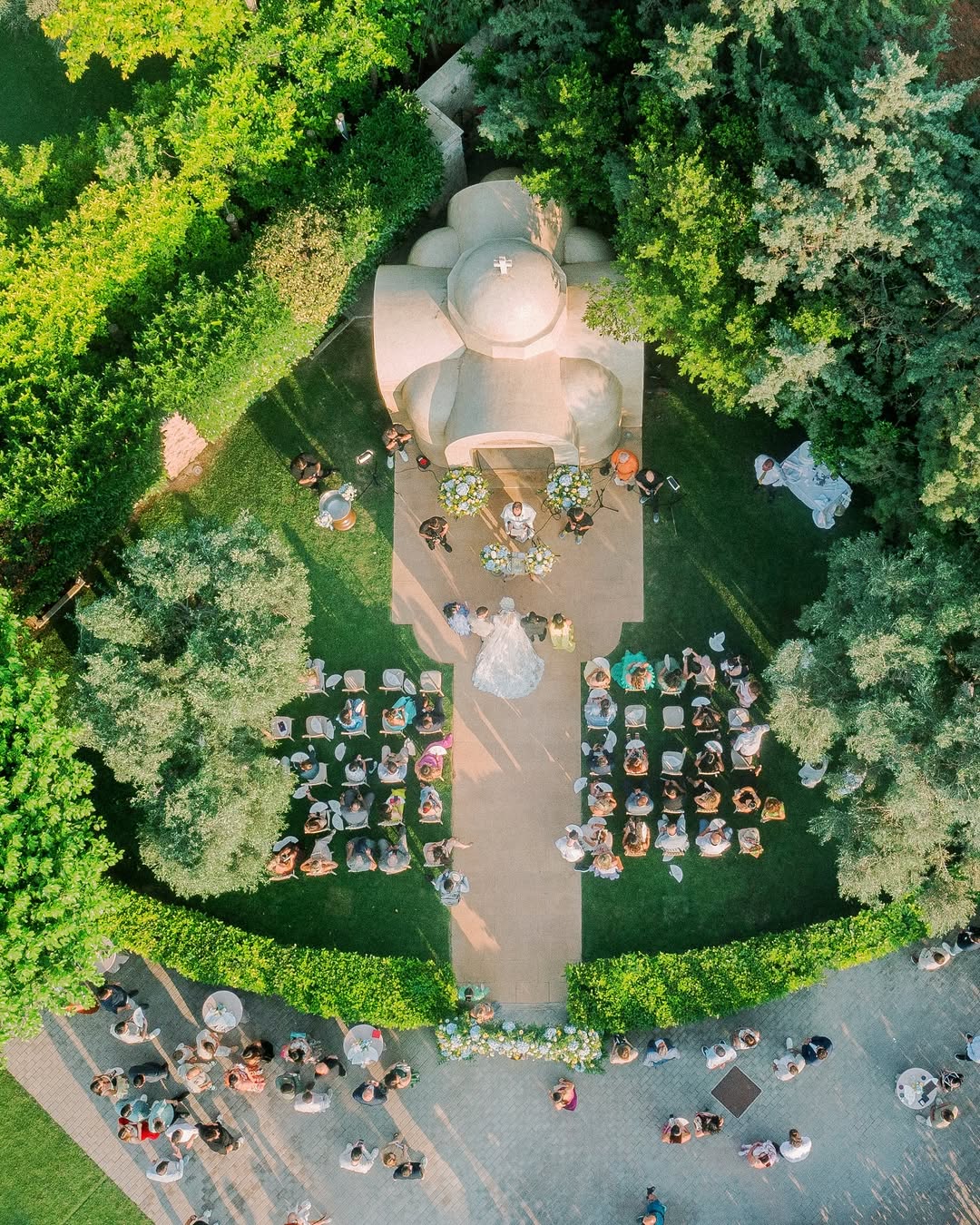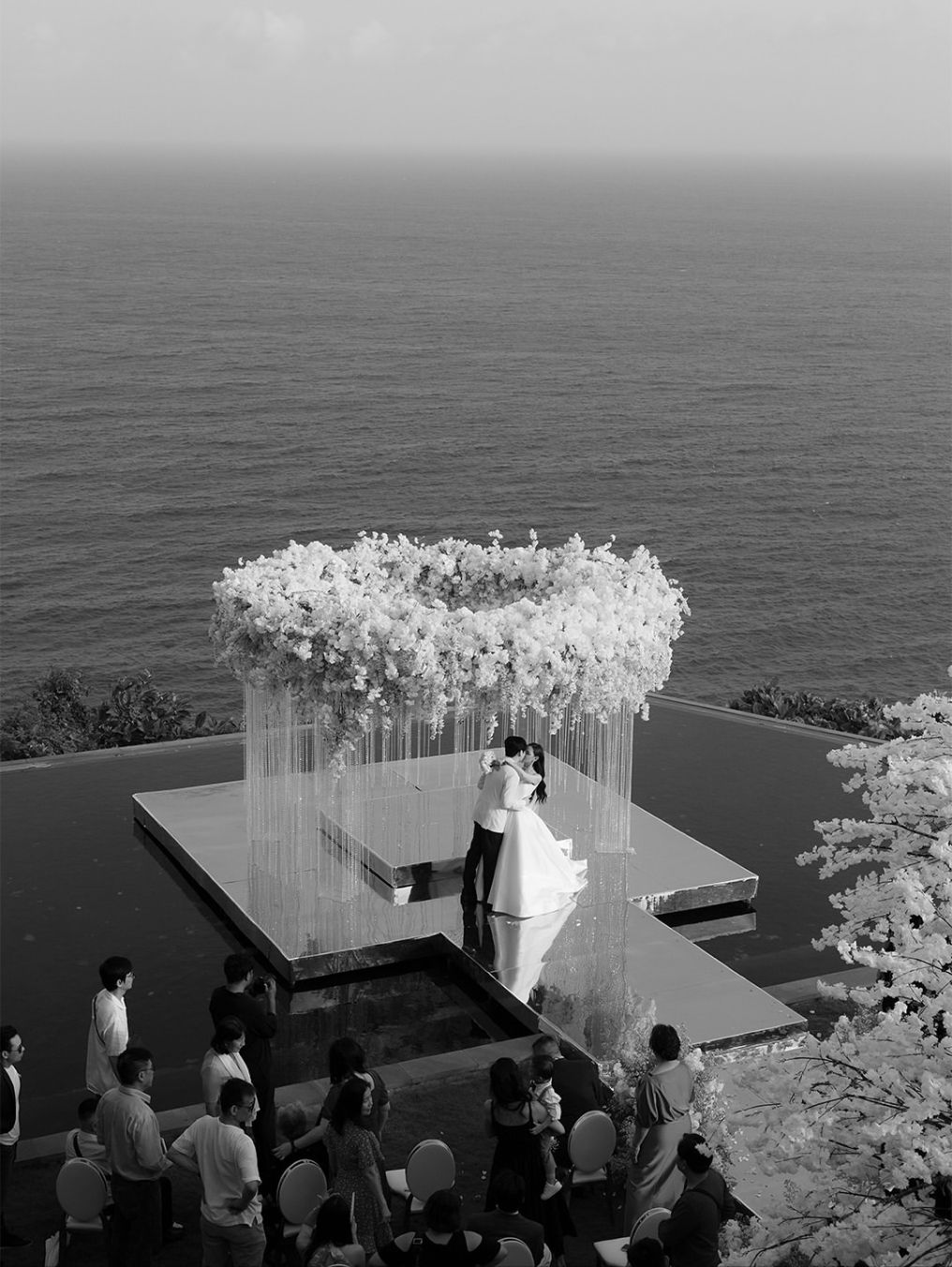Expert Tips for Stunning Wedding Day Flat Lays and Detail Shots
- Author: Natali Grace Levine
- Reading time: 8 min 50 sec
- Publication date: 11/03/2025
- Setting the Stage
- The Dance of Placement
- When Light Becomes Poetry
- Your Canvas Speaks First
- Touch, Layer, Seduce
- The Soul of the Shot
- The Non-Negotiables: What Never Fails
- Racing Against the Clock: The 20-Minute Miracle
- Stealing Like an Artist (The Right Way)
- When Venues Fight Back: Adaptation Masters
- Shots That Haunt You
- The Boring Stuff That Makes or Breaks Everything
- Your Flat Lay Survival Kit
- What's Next
A Jimmy Choo stiletto balanced on a wild bush. Grandmother's rosary tucked inside an Italian shell. A perfume bottle catching light like liquid gold.
These aren't Instagram accidents—they're calculated shots that make brides weep and other photographers curse with envy. While most wedding photographers chase the obvious moments, the smart ones know the real magic lives in the quiet spaces between. The twenty minutes spent arranging rings and ribbons often delivers the images couples frame first.
Four top wedding photographers spill their flat lay secrets—from basement prep work to golden hour discoveries that transform simple objects into pure art.
Find Your Perfect Wedding Vendors
Setting the Stage




Talk to your clients first. Sounds obvious, but most photographers skip this step and regret it later. "We believe the best tips for styling a flat lay is first ask your client if it's something they value in their final album. Do they want a true flat lay design or more 'lived in' detail moments?" explains the team at 93 Wedding Collective. "Flat lays can take upwards of 45-minutes to execute so knowing your clients vision beforehand helps you plan!"
Some couples want magazine-perfect arrangements. Others prefer candid, scattered moments. Know which camp your couple falls into before you start moving furniture around their getting-ready suite.
Belgian photographer Anne De Geyter keeps it practical: "Before the wedding day I ask my couple or planner to gather the essentials (invitations, envelopes, stamps, rings, boxes, vows, jewelry etc)."
Get specific about what you need. Family heirlooms, perfume bottles, anything with a story. The obvious stuff is just the beginning—dig deeper for pieces that actually matter to them.
The Dance of Placement




Forget everything you learned about centering subjects. Flat lays thrive on intentional imbalance and unexpected relationships between objects.
"The visuals should feel balanced. The rule of thirds does not only work in photography, also here in flats," notes Anne De Geyter.
But some photographers throw rules out completely.
 A compelling flatlay is never linear. Eschew symmetry in favor of layered storytelling—let textures rise and recede, let objects breathe and mingle, Lux Visual Storytellers. Nestle dainty earrings atop an embossed invitation, or allow an envelope to peek from beneath a silk ribbon.
A compelling flatlay is never linear. Eschew symmetry in favor of layered storytelling—let textures rise and recede, let objects breathe and mingle, Lux Visual Storytellers. Nestle dainty earrings atop an embossed invitation, or allow an envelope to peek from beneath a silk ribbon.
Start big, then break it down. 93 Wedding Collective follows this approach: "We always try to follow a rule of thirds when placing items on the flat lay and we start with a big one with a lot of details and then start breaking down from there and creating other ones with more intention."
Build one comprehensive shot, then create smaller vignettes from the same elements. You'll get multiple looks without starting from scratch every time.
When Light Becomes Poetry
Natural light wins almost every time, but knowing how to shape it separates good shots from great ones. "When I have natural window light I place the flats in the direct light. If not, I use a flash," shares Anne De Geyter, keeping it straightforward.
Others get more philosophical about illumination. "Light is not just illumination—it is emotion. Seek out the poetic fall of natural light streaming through a window or half-open door. Shadows are not flaws but brushstrokes; they sculpt depth, evoke quiet drama, and draw focus to form," explains Lux Visual Storytellers.
Stop fighting shadows. Directional light from a large window creates depth that flat, even lighting never will. Position your setup where light falls naturally, then use sheer curtains to soften harsh sun if needed.
If you're stuck with artificial light, one off-camera flash with a large softbox can mimic window light beautifully. Just don't overthink it.
Your Canvas Speaks First




Your backdrop sets the mood before you place a single object on it. Choose poorly and even perfect lighting won't save you. "I use neutral backdrops like linen or wood or paper," explains Anne De Geyter, favoring surfaces that complement rather than compete.
"Your surface is your stage. Allow it to harmonize with the tone of the wedding. For a soft, romantic ambiance, choose muted blush, sand, or powder blue. The invitation's palette often whispers the aesthetic—request a photo or swatch in advance to weave everything seamlessly together," advises Lux Visual Storytellers.
Don't overlook what's already there. 93 Wedding Collective notes: "We have flat lay mats but sometimes using the materials around you is just as beautiful like old wood floors, bathroom tiles, or even the grass outside." Hotel marble countertops, vintage hardwood floors, even textured wallpaper can work. Scout your location with fresh eyes instead of defaulting to what you brought.
Touch, Layer, Seduce




Flat surfaces are boring. Great flat lays have dimension, contrast, and tactile appeal that makes viewers want to reach into the frame. "I add natural textures like fabrics, florals," mentions Anne De Geyter.
"Texture is the language of intimacy. If the groom wears weathered cognac leather shoes, echo that warmth with a worn leather armchair or linen in the same tone. Marble with metallics, silk with glass—when texture reflects the subject, the frame becomes immersive," elaborates Lux Visual Storytellers.
Mix smooth and rough, hard and soft, matte and shiny. Silk ribbon against weathered wood. Polished metal beside soft velvet. These contrasts create visual tension that holds attention. Use ring boxes, vintage books, or folded fabric to create different heights. Flat lays shouldn't actually be flat—they need dimension to work.
The Soul of the Shot




Anyone can arrange objects nicely. Master photographers arrange emotions and memories. "I want to let the items tell their story. I don't use everything in one flat lay. Maybe the ring is very important to the bride (because it was from her mother) - so it will need an extra flat lay," explains Anne De Geyter.
93 Wedding Collective digs deeper:
 Another key item we capture is any special jewelry. Like a late family members necklace they're wearing to remember them by or a ring their mom gave them for good luck. There's always a story to be told with some of the smallest of details.
Another key item we capture is any special jewelry. Like a late family members necklace they're wearing to remember them by or a ring their mom gave them for good luck. There's always a story to be told with some of the smallest of details.
"I begin with the invitation—it serves as the prologue to their visual narrative. Often meticulously designed, it encapsulates the couple's aesthetic sensibility, the chosen color palette, and the emotional tone of the celebration," notes Lux Visual Storytellers.
Find the pieces that make them cry when they see the photos years later. A prayer card tucked in the bouquet. Cufflinks from his late father. The perfume she's worn since college. Those details matter more than perfect symmetry.

The Non-Negotiables: What Never Fails
Some elements work for every couple, every time. Build your arrangements around these proven winners. "The rings are always something we prioritize. They're so symbolic for the day and making sure we get a great shot of those is important to us," emphasizes 93 Wedding Collective.
Wedding rings catch light beautifully and immediately communicate the story. Beyond that, focus on items that represent both partners.
For her: shoes, jewelry, perfume, hair accessories, the veil. For him: watch, cufflinks, shoes, cologne if he wears it. The invitation suite ties everything together with color and design elements.
Csaba Gyorfi keeps it simple: "They mainly focus on bridal shoes and accessories that may contain visible elements such as sunglasses, perfume, rings." Fresh flowers or greenery add life to any arrangement. Ask the florist for extra stems or snip something from the venue grounds. Organic elements prevent flat lays from feeling too sterile.
Racing Against the Clock: The 20-Minute Miracle
Great flat lays take time. Anyone who tells you otherwise is lying or cutting corners. "People think you can do this very quick - but I think a good flat lay needs 20 minutes to get everything pretty," warns Anne De Geyter.
Smart photographers build buffer time into their timeline. "On the wedding day, we make sure to arrive 30-45 min before our start time because we love curating flat lays and this extra time helps us get creative," shares 93 Wedding Collective. That extra arrival time lets you scout locations, test lighting, and start arranging without panic. It also gives you flexibility when your planned setup spot doesn't work as expected.
Work efficiently by creating multiple shots from the same arrangement. Start comprehensive, then simplify. One careful setup can yield several different compositions.
Stealing Like an Artist (The Right Way)




Even pros need inspiration. The trick is using reference material as a jumping-off point, not a template to copy. "We're not afraid to pull out some saved inspo on our phones and use that as a launching point before making it our own," admits 93 Wedding Collective.
Lux Visual Storytellers takes inspiration further:
 I love weaving fragments of art history into my compositions. Art books—whether filled with classic paintings or editorial photography—offer rich textures and visual metaphors. A carefully placed page, an open spread with a sculpture or an abstract form, can infuse the flatlay with mood and narrative.
I love weaving fragments of art history into my compositions. Art books—whether filled with classic paintings or editorial photography—offer rich textures and visual metaphors. A carefully placed page, an open spread with a sculpture or an abstract form, can infuse the flatlay with mood and narrative.
Build a collection of images that inspire you, but adapt them to serve your specific couple's story. The goal isn't recreation—it's creative adaptation.
When Venues Fight Back: Adaptation Masters
Not every location offers ideal flat lay conditions. The best photographers turn limitations into creative opportunities.
93 Wedding Collective shares a perfect example: "Recently we did a wedding at a Catholic Church with gorgeous stained glass windows. We had to do a quick flat lay at the church but only had a few items because of the timeline. We grabbed the brides shoes, ring and jewelry and some fresh florals and set them up in a perfect spot where you see the stained glass coming down in her details." They turned a time constraint and limited props into an opportunity to incorporate the venue's most beautiful architectural element.
When working in challenging conditions, simplify your approach. Focus on fewer, more carefully selected elements rather than attempting complex arrangements that won't work in the available space.
Shots That Haunt You




The flat lays photographers remember years later aren't necessarily the most elaborate ones. Anne De Geyter describes her favorite: "I love the simplicity in flat lays - so I think the one with the white shoes, white flowers I picked in the garden, the veil, perfume bottle and invitation are still my favorite. It was also part of a wedding that was international published."
Sometimes restraint creates more impact than elaborate arrangements.
Other photographers go for drama. Lux Visual Storytellers recalls: "A flatlay I'll never forget was crafted in the heart of Italy, inside a grand Scagliola shell I discovered tucked away in another room of the villa. The bride wore a Lanvin ruffled cape dress—ethereal and delicate, reminiscent of seafoam. When I stumbled upon the shell, I immediately felt a resonance; its organic curves echoed the fluidity of her gown."
Even unconventional approaches can work. Csaba Gyorfi remembers: "One of these was when I placed a Jimmy Choo on a bush in front of a building and put a colorful flower next to it. It was a bit extravagant and stylish."
Your memorable shots might be minimal or maximalist, traditional or rebellious. What matters is that they feel authentic to both your vision and your couple's story.
The Boring Stuff That Makes or Breaks Everything




Creative vision means nothing if your technical execution fails. Get the basics right first. "Depending on the style, it is worth focusing on the lights, but most importantly on the composition, which is close to the style," notes Csaba Gyorfi.
Use a tripod whenever possible. This ensures sharp images and lets you fine-tune compositions without constantly reframing. Choose your depth of field carefully. While shallow focus can create dreamy effects, many flat lays benefit from sufficient sharpness throughout. Apertures between f/5.6 and f/8 usually provide the sweet spot. Watch your white balance, especially when mixing natural and artificial light sources. Consistent color across your flat lay series maintains visual cohesion in the final gallery.
Your Flat Lay Survival Kit
Having the right tools available makes everything easier and faster.
Pack these essentials:
- Neutral backdrop materials (linen, paper, acrylic sheets)
- Small blocks for creating elevation
- Reflectors for shadow control
- Various ribbon and fabric textures
- A few vintage props that work with multiple styles
- Lens cleaning supplies for rings and reflective surfaces
- Tweezers for precise positioning of tiny items
This portable kit lets you adapt to any situation without relying entirely on what each venue provides.

What's Next

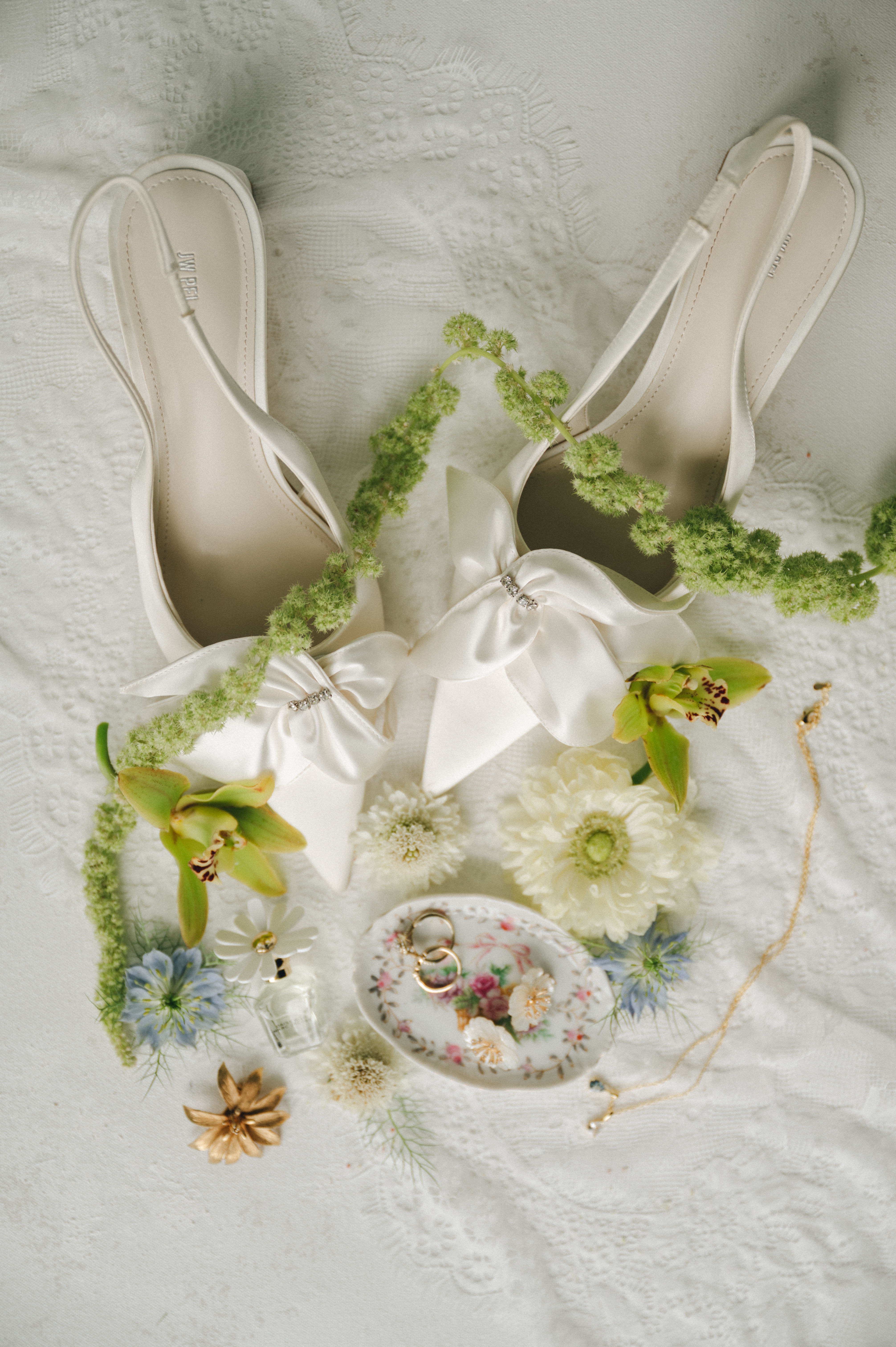


Flat lay photography keeps evolving, but certain principles remain constant. Technical skill combined with genuine storytelling creates images that transcend trends.
"Curate with intention. A well-balanced flatlay is as much about what you exclude as what you include," advises Lux Visual Storytellers. "If a detail disrupts the visual harmony—a clashing hue or overly bold item—photograph it separately, or reframe it with care." This philosophy of intentional curation, mixed with technical competence and real understanding of your couples' stories, creates flat lay photography that becomes art instead of just documentation.
The most successful detail photographers understand they're not just arranging objects—they're crafting visual stories that enhance the larger wedding narrative. Each flat lay becomes a chapter in the couple's love story, worth the time, creativity, and skill invested in making it beautiful.
Great flat lays happen when thoughtful preparation meets artistic vision, technical skill, and genuine care for the stories you're telling. Master these elements, and you'll create detail photography that couples treasure for decades.







